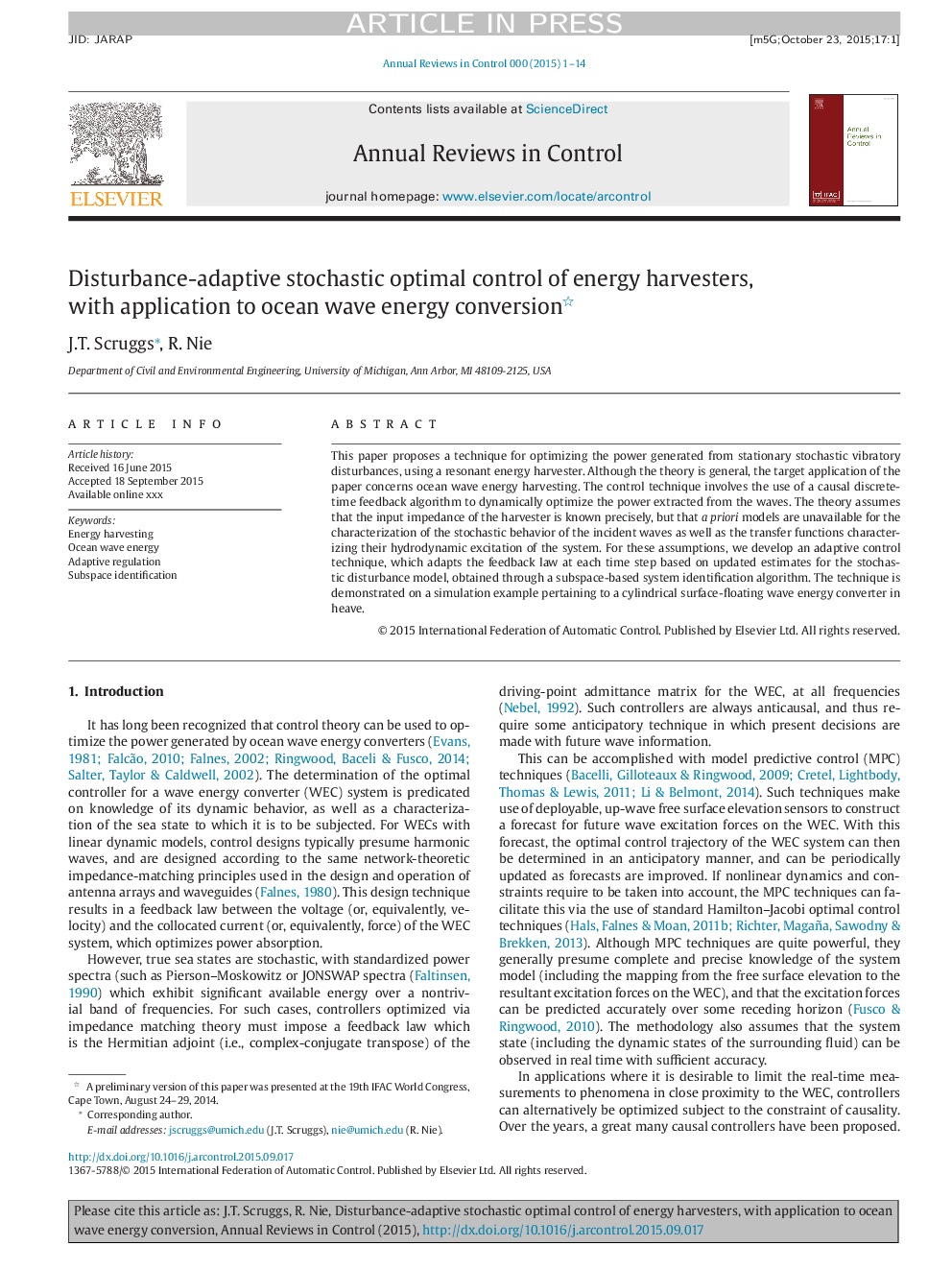| کد مقاله | کد نشریه | سال انتشار | مقاله انگلیسی | نسخه تمام متن |
|---|---|---|---|---|
| 7108002 | 1460590 | 2015 | 14 صفحه PDF | دانلود رایگان |
عنوان انگلیسی مقاله ISI
Disturbance-adaptive stochastic optimal control of energy harvesters, with application to ocean wave energy conversion
ترجمه فارسی عنوان
کنترل اختلال تصادفی برداشت مصرف انرژی با استفاده از تبدیل انرژی موج اقیانوس
دانلود مقاله + سفارش ترجمه
دانلود مقاله ISI انگلیسی
رایگان برای ایرانیان
کلمات کلیدی
برداشت انرژی، انرژی موج اقیانوس، مقررات سازگار، شناسایی زیرمجموعه،
ترجمه چکیده
در این مقاله یک تکنیک برای بهینه سازی قدرت تولید شده از اختلالات ارتعاشی تصادفی ثابت با استفاده از یک برداشت محصول انرژی رزونانس پیشنهاد شده است. گرچه نظریه به طور کلی است، کاربرد هدف این مقاله، صرفه جویی انرژی در موج اقیانوس است. روش کنترل شامل استفاده از یک الگوریتم بازخورد زمان گسسته علی است تا به طور پویا بهینه سازی قدرت استخراج شده از امواج. این نظریه فرض می کند که امپدانس ورودی هاروستر دقیقا شناخته شده است، اما مدل های پیشین برای توصیف رفتار تصادفی امواج حادثه و همچنین توابع انتقال ویژگی های تحریک هیدرودینامیکی سیستم آنها در دسترس نیستند. برای این فرض ها، ما یک تکنیک کنترل تطبیقی را ایجاد می کنیم که قوانین بازخورد در هر گام زمانی را براساس برآوردهای به روز شده برای مدل اختلال تصادفی که از طریق یک الگوریتم شناسایی سیستم بر پایه زیر فضایی حاصل می شود، تطبیق می دهد. این تکنیک در یک مثال شبیه سازی شده در رابطه با یک مبدل انرژی موج شناور سطح استوانه ای در ولتاژ نشان داده شده است.
موضوعات مرتبط
مهندسی و علوم پایه
سایر رشته های مهندسی
کنترل و سیستم های مهندسی
چکیده انگلیسی
This paper proposes a technique for optimizing the power generated from stationary stochastic vibratory disturbances, using a resonant energy harvester. Although the theory is general, the target application of the paper concerns ocean wave energy harvesting. The control technique involves the use of a causal discrete-time feedback algorithm to dynamically optimize the power extracted from the waves. The theory assumes that the input impedance of the harvester is known precisely, but that a priori models are unavailable for the characterization of the stochastic behavior of the incident waves as well as the transfer functions characterizing their hydrodynamic excitation of the system. For these assumptions, we develop an adaptive control technique, which adapts the feedback law at each time step based on updated estimates for the stochastic disturbance model, obtained through a subspace-based system identification algorithm. The technique is demonstrated on a simulation example pertaining to a cylindrical surface-floating wave energy converter in heave.
ناشر
Database: Elsevier - ScienceDirect (ساینس دایرکت)
Journal: Annual Reviews in Control - Volume 40, 2015, Pages 102-115
Journal: Annual Reviews in Control - Volume 40, 2015, Pages 102-115
نویسندگان
J.T. Scruggs, R. Nie,
